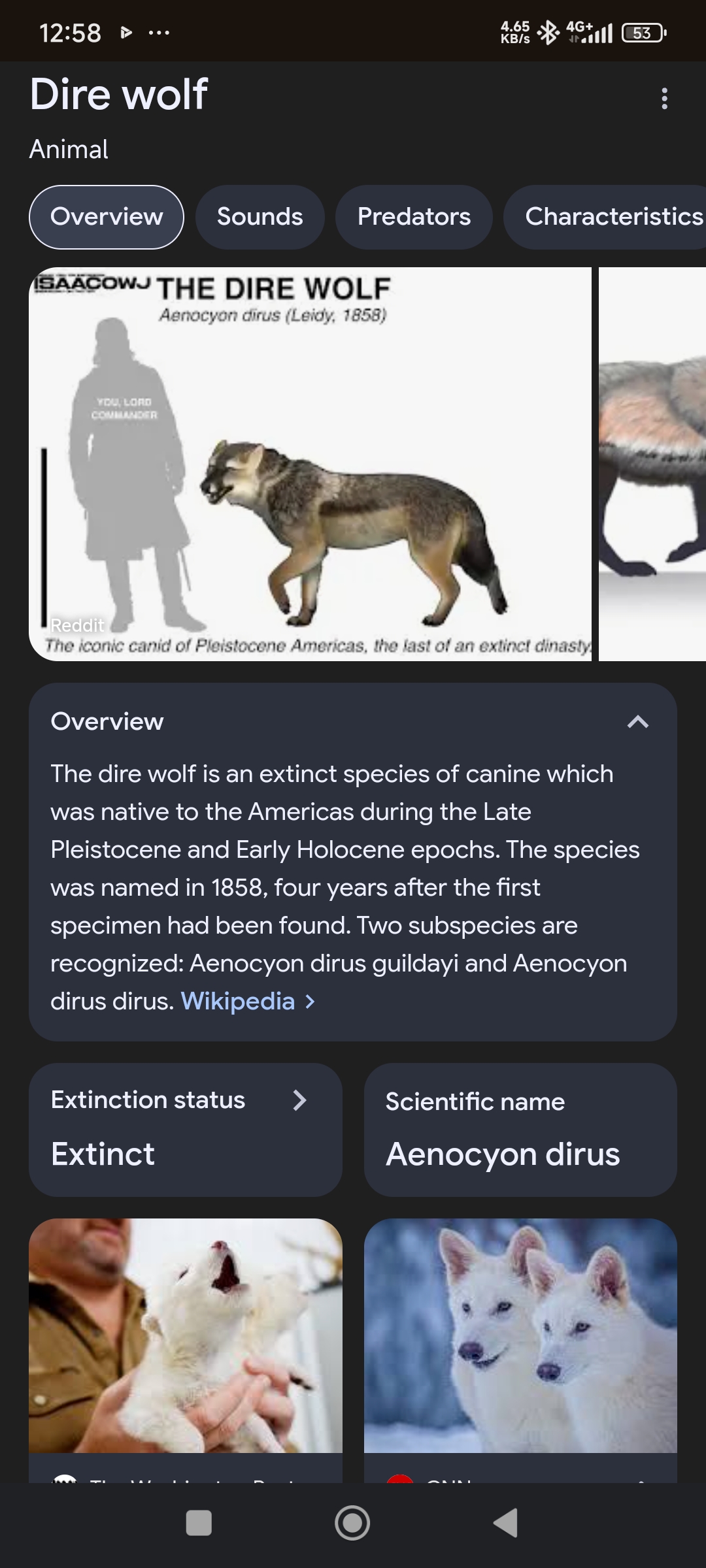Dire Wolves Back From Extinction? ABC News Exclusive!
Hold onto your hats, folks! Forget Jurassic Park – we might be on the verge of something even wilder. ABC News has obtained exclusive information suggesting the long-extinct dire wolf could be making a comeback, not through some Hollywood-style genetic manipulation, but through cutting-edge cloning technology. Prepare to have your mind blown!
Dire Wolves: Back From the Dead?
For millennia, the dire wolf (Canis dirus), a fearsome predator that roamed North America alongside mammoths and saber-toothed cats, has existed only in the fossil record and the imaginations of paleontologists. These apex predators, larger and more powerful than their gray wolf cousins, vanished around 13,000 years ago, leaving behind a mystery that has captivated scientists for generations. What caused their extinction? Climate change? Competition with other predators? Or something else entirely?
Now, whispers of a groundbreaking project are swirling. Leaked documents obtained by ABC News suggest a team of scientists may have successfully cloned a dire wolf, bringing this iconic creature back from the brink of oblivion. If confirmed, this would represent not only a scientific triumph of unprecedented proportions but also a monumental ethical challenge, raising profound questions about our responsibility towards extinct species and the very nature of life itself.
Cloning’s Wild New Frontier
The cloning of extinct animals is no longer the stuff of science fiction. While the process remains incredibly complex and challenging, advancements in genetic engineering and reproductive technologies are rapidly pushing the boundaries of what’s possible. Scientists have made significant strides in cloning other extinct species, though none have yielded a live birth yet. This dire wolf project, however, seems to be further along than any previous attempt.
The leaked documents hint at the use of advanced gene-editing techniques combined with surrogacy, utilizing a closely related species as a gestational carrier. The secrecy surrounding the project suggests a cautious approach, potentially to avoid unwarranted criticism or legal challenges. The potential for success, however, is tantalizing, and the implications far-reaching. Could this be a glimpse into a future where we can resurrect other extinct species, restoring biodiversity and rewriting the narrative of extinction?
The Science Behind the Comeback
The key to bringing back the dire wolf lies in recovering sufficiently intact ancient DNA. While DNA degrades over time, scientists have been able to extract fragments from well-preserved fossils, particularly those found in permafrost. These fragments, though often incomplete, can be painstakingly pieced together using advanced sequencing and computational techniques to reconstruct the dire wolf’s entire genome.
This reconstructed genome then forms the basis for cloning. Scientists would likely use a technique similar to somatic cell nuclear transfer, where the nucleus of a dire wolf cell is inserted into an enucleated egg cell of a closely related species, such as a gray wolf. This egg is then implanted into a surrogate mother, and if all goes well, the result would be a live, breathing dire wolf pup – a clone of an animal that has been extinct for thousands of years. The success rate of such a procedure is, however, extremely low.
The possibility of dire wolves roaming the Earth once more is a prospect that’s both thrilling and unsettling. While the details remain shrouded in secrecy, the leaked information strongly suggests we may be on the cusp of a new era in conservation biology. The ethical implications are vast, demanding careful consideration as we delve deeper into this uncharted territory. One thing is certain: this story is far from over, and ABC News will continue to keep you updated as this incredible story unfolds.

